After saying our night prayer, my 6-year old daughter, asked me what does Holy Week means, she told me that she heard “Holy Week” a lot of times already but she cannot understand why we call a week as holy… I then tried to explain to her in the simplest way that I can what holy week is. After leaving my kids to bed, I then realized that when I was younger, I didn’t ask that same question to my parents – I learned what Holy Week is all about through the religious observance and traditions that I have witnessed and experienced myself.
I then thought of writing this post for my three children, so when the time comes that they can understand better, I can let them experience what I did through my writing.
Let me start by describing what Lent and Holy Week in the way that I understand it (by saying this, I am not claiming the accuracy of my description, as the events that I am writing here is based on how I witnessed them). Lent is a religious observance of Christians that is traditionally observed for 40 days. The annual commemoration of Lent is observed to set aside time to reflect on the passion, death and resurrection of Jesus Christ. Many Christians observe a period of fasting and spiritual discipline during lent.
HOLY WEEK
Holy Week is the last week of Lent and the week before Easter. In the Philippines, this is referred as Mahal na Araw or Semana Santa. The week starts from Palm Sunday, then come Holy Monday, Holy Tuesday, Holy Wednesday, Maundy Thursday, Good Friday and concludes on Black Saturday. Easter Sunday is the beginning of another liturgical week.
LENT/HOLY WEEK TRADITIONS & PRACTICES
Philippines is known to be the only predominantly Christian country in the whole of Asia and a big number of devout Catholics made up its population. This is one of the reasons why Lent/ Holy Week traditions are widely observed in a very unique way in the country.
Both Maundy Thursday and Good Friday are public holidays in the Philippines. Though Holy Monday to Holy Wednesday are regular workdays, this week is considered to be a solemn week and is observed quietly, until Black Saturday. Filipinos have a lot of customary beliefs, in every event or occasion there will be some of these beliefs or we called pamahiin that comes out. I remember my Lola (grandmother) will always prevent us, her grandchildren from making excessive noise on Good Friday and she will even prohibit us from taking a bath after 3:00 in the afternoon, because, Jesus Christ is said to have died in that hour and we should be mourning for his death.
There are different traditions in different provinces in the Philippines, some of these traditions even started from olden times and were has passed from generations to generations. Even in today’s modern and high-tech world, these traditions never seem to wane.
Here are the 9 notable practices in traditions observed in my home country during Lent.
- Miyerkules ng Abo. Ash Wednesday (Miyerkules ng Abo) is the first day of the Lent. It is the practice of placing ashes on the forehead of the participant to signify inner repentance. The ashes used during Ash Wednesday are from the branches blessed on the previous year’s Palm Sunday.
- Fasting and Abstinence. As part of their sacrifice, some chooses to submit themselves to penitence that includes fasting and abstinence. Most Catholics between the ages of 18 and 59 fast starting Ash Wednesday until Good Friday, those who fasts partake only one full meal a day. Abstinence on the other hand is where people who are 14 years older must abstain from meat on Ash Wednesday, Good Friday and all the Fridays of Lent. Abstinence is that lent sacrifice that most people I know choose to do, even in our own household, my parents have imposed a no-meat Friday during lent every year.
- Domingo de Ramos. Palm Sunday, also referred as Linggo ng Palapas is the first day of the Holy Week, this occasion is done to remember the day that Jesus entered Jerusalem where the crowd greeted him with waving palm branches the week before His death and resurrection. On Palm Sunday, churchgoers bring palm fronds to the church to have them blessed by the priest. After the mass, these blessed palm braches are usually placed in the window, door or altars, in the belief that it can ward off evil spirits and can bring peace and blessings from God.
- Pabasa ng Pasyon. A family-style tradition, more popularly known as Pabasa is chanting of the life and sufferings of Jesus Christ. A group of people who are normally from families of a particular community or barangay takes turns to chant parts of the verses from the book known as Pasyon. Pabasa done continuously day and night from Maundy Thursday until Good Friday.
- Senakulo or Cenacle is a traditional passion play depicting the suffering and death of Jesus Christ. Senakulo is performed on Holy Week and are commonly performed on the streets of the barangay, on a large stage or room, in a big compound or at a chapel or church. When I was in grade school, my father will bring us to Cainta, Rizal to watch Senakulo, I remember the performers where dressed up in costumes depicting the roman soldiers complete with body armor. The Senakulo in Marinduque is one of the most popular senakulos in the country, where actors are wearing masks of hand carved wood or paper-mache topped by a helmet adorned with multi-hued paper flowers complete the typical morion garb. In the provinces of Pampanga and Rizal, devotees will allow themselves to get whipped in the back repeatedly until they start bleeding while others will allow themselves to get crucified to show their penance and resentment.
- Visita Iglesia. This is one of the traditions that for me is easy to do for a sacrifice, from the word itself, this involve visiting of churches. This tradition attempts to visit 7 churches (while others choose to visit 14 churches) and recite the station of the cross in them. It is traditionally done on Maundy Thursday or Good Friday, and accommodate Catholic devotee, a lot of Catholic churches remained open until midnight during Holy Week.
- Washing of the Feet. The main observance of the day during Maundy Thursday is the last mass before Easter, commonly called the Mass of the Institution of the Lord’s Supper. This mass includes the re-enactment of the Washing of the Feet of the Apostles. During this mass the priests literally wash the feet of his parishioners, just as Jesus washed the feet of his disciples. The priest removes some of his outer vestments, just as Jesus removed his outer cloak. Volunteers are called up to the sanctuary, usually after the Gospel, and asked to remove their shoes and socks. But in the recent times, parishioners who will participate in the “Washing of the Feet” are asked in advance.
- Prusisyon ng mga Santo. In Angono, Rizal a procession is held in the evening of Holy Wednesday after the celebration of the Holy Mass. This procession is participated by different images depicting the passion of Jesus before his crucifixion and resurrection. The Nazareno was the main image of the procession together with the “Inang Awa” the sorrowful image of the Blessed Virgin Mary. Good Friday is also commemorated with solemn street possessions. One of the usual highlight of Good Friday is the is the procession of the Santo Entierro, an often wooden or resin sculpture of the dead Christ lying supine. Paete, Laguna and Lipa, Batangas are known for its tradition for their solemn processions for the Santo Entierro. In other cities and provinces, the procession is participated by different religious images depicting the passion of Jesus Christ. These images are placed in richly adorned giant floats, which are normally designed or decorated by volunteer parishioners.
Photo by Von Cruz Photo by Von Cruz Photo by Von Cruz Photo by Von Cruz Photo by Von Cruz Photo by Von Cruz Photo by Von Cruz Photo by Von Cruz Photo by Von Cruz Photo by Von Cruz Photo by Von Cruz Photo by Von Cruz Photo by Von Cruz Photo by Von Cruz Photo by Von Cruz Photo by Von Cruz Photo by Von Cruz Photo by Von Cruz Photo by Von Cruz - Salubong. Easter marks the joyous celebration of the resurrection of Christ and the celebration of the meeting (Salubong) of Jesus Christ and Blessed Virgin Mary in Galilee. There are different ways on how each provinces celebrates Easter, most provinces starts the first Easter mass with a Salubong. Salubong starts with an early morning procession that usually starts between 4:00 AM to 5:00 AM. I will always be proud to say that the place where I was born – Angono has one of the richest tradition of observing Holy Week and celebrating Easter Sunday. Angono has a unique way of Salubong ceremonies, it highlights the unique Angono dance called “bati,” performed by the Tenyeta at the start of the program and the Kapitana dances after. Both the Kapitana and Tenyenta dressed in beautiful gowns holds a flag that they transfer from one hand to another as they dance gracefully to the tune of Gavotte. The Kapitana recites the dicho (poem depicting the Blessed Virgin Mary and the Risen Christ) and before the dicho ends the occasion will exhibit the creativity and ingenuity of Angono folks in creating the 7 paper-mache birds and heart where a young girl dressed as an angel comes out singing Regina Coeli and removes the mourning veil from Mary’s head. The Kapitana finishes the Dicho and dances the second part of the Bati that now has faster and joyous movements.
Indeed, Filipinos has a very rich culture and tradition, which is very evident in how they observe the Lenten season. Wherever, I am now, I will always be proud of these traditions and I will always carry with meanings and me the important learning that these traditions symbolizes with the hope to pass it on to my children.
I admit that since, I came to Canada, it was not easy for me to do the practices that I learned from my parents as a way of sacrifice during Lent. However, I tried to do my own penance especially during Holy Week. For this year, and the past years, I have kept away from accessing my social media accounts (Facebook and Instagram) most specifically on Maundy Thursday and Good Friday. This may be simple but for me it is a way of depriving myself from doing things that I enjoy doing.
People may have different ways of observing the lent and offering their sacrifice during this season, but in the end, what matters the most is the person’s sincerity and intentions. As mentioned, Lent is that time to remember and reflect on the passion of Jesus Christ when he suffered, died, and resurrected to pay for our sins.
References:
Celebrating Mahal na Araw – “Holy Week” in the Philippines. http://www.festivals-holidays.com/mahal-na-araw-holy-week-philippines/
Angono’s Holy Week Culture and Traditions. https://sites.google.com/site/angonoph/home2
Holy Week in the Philippines. http://en.wikipedia.org/wiki/Holy_Week_in_the_Philippines












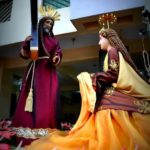

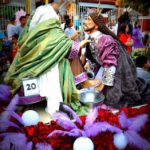

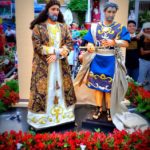
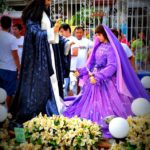

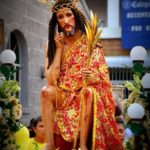

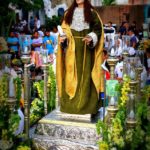


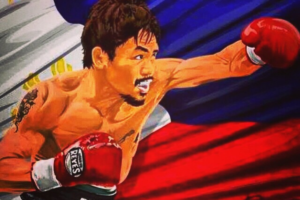








1 thought on “Observing Lent – Filipino Ways & Traditions”
Nice pictures!